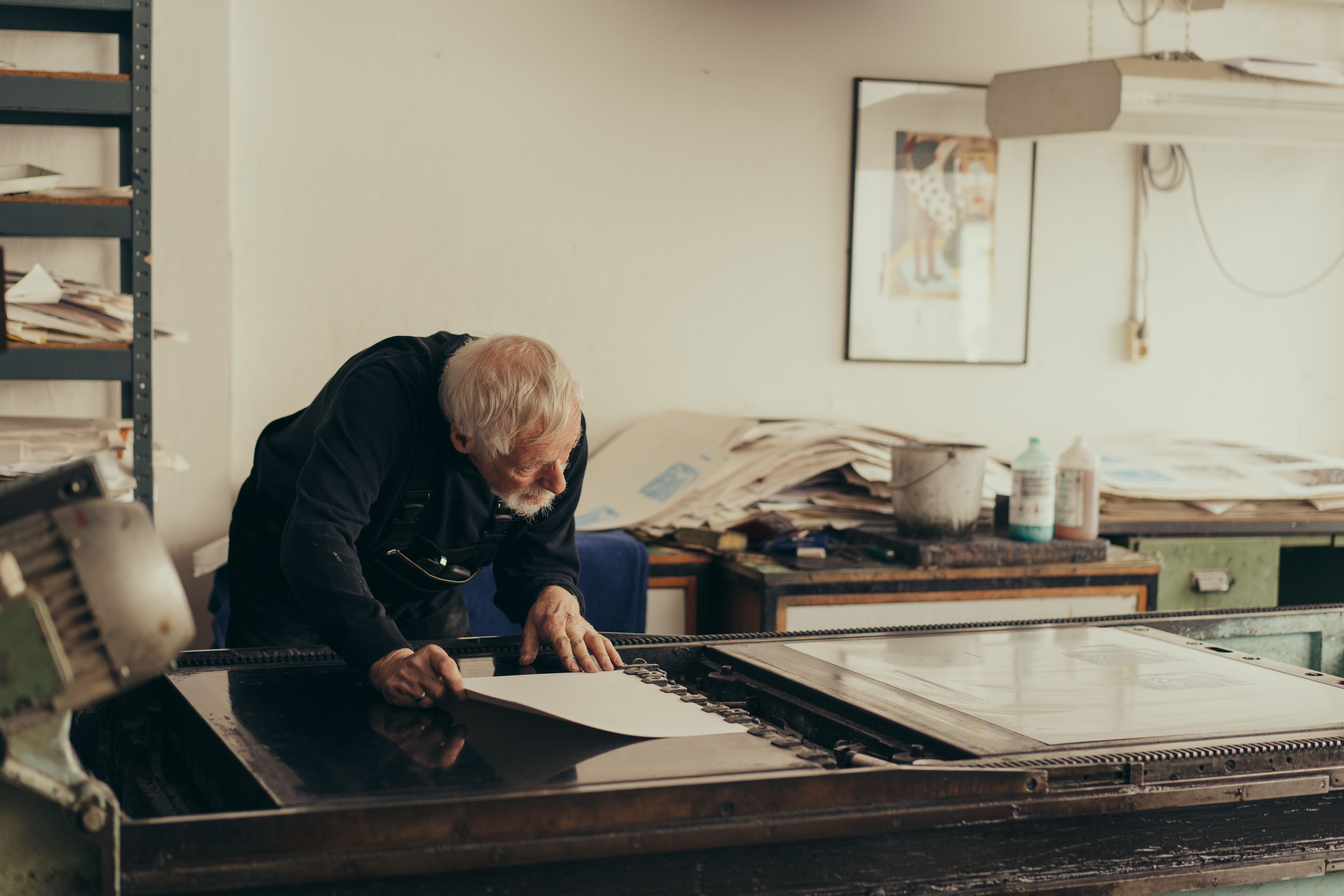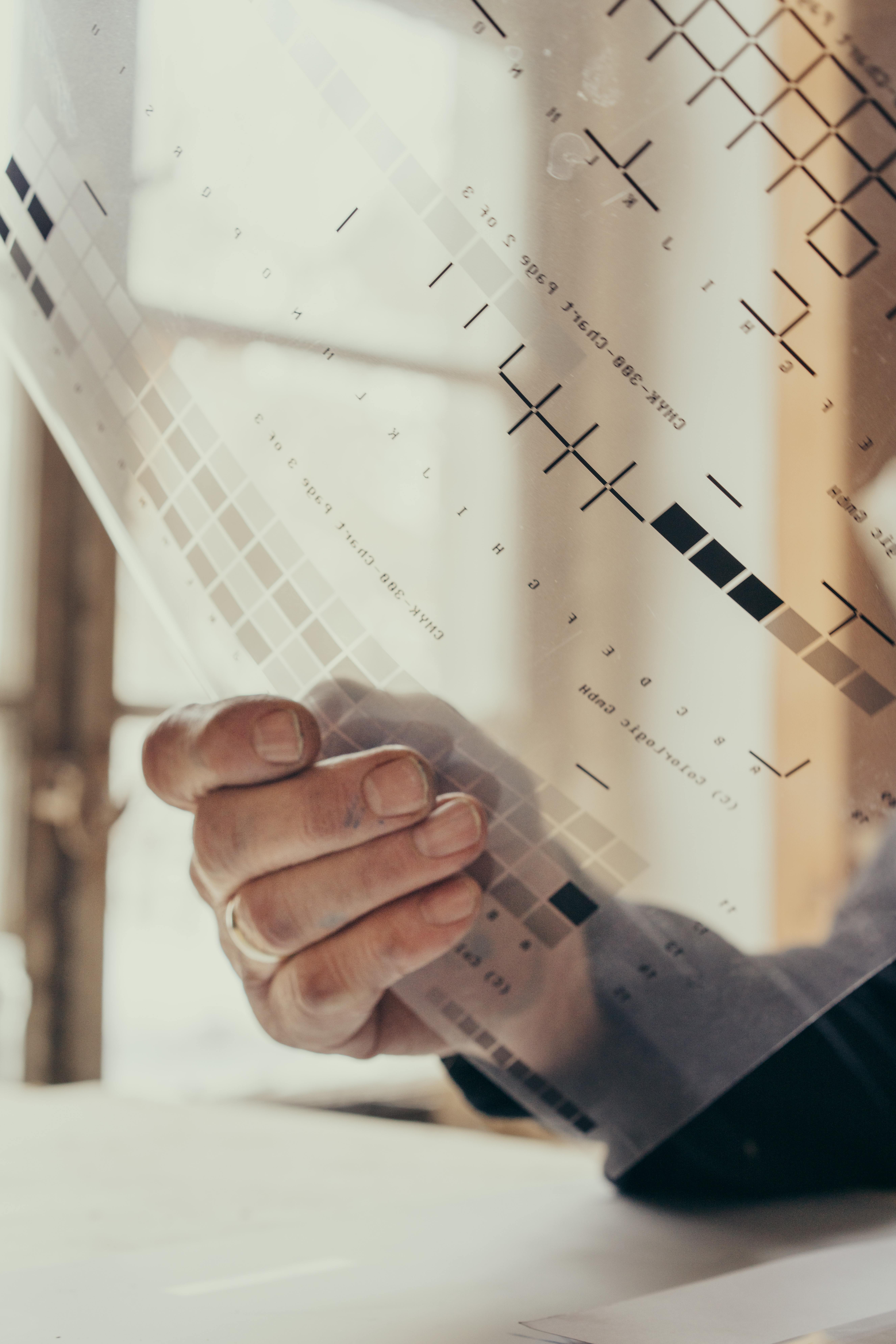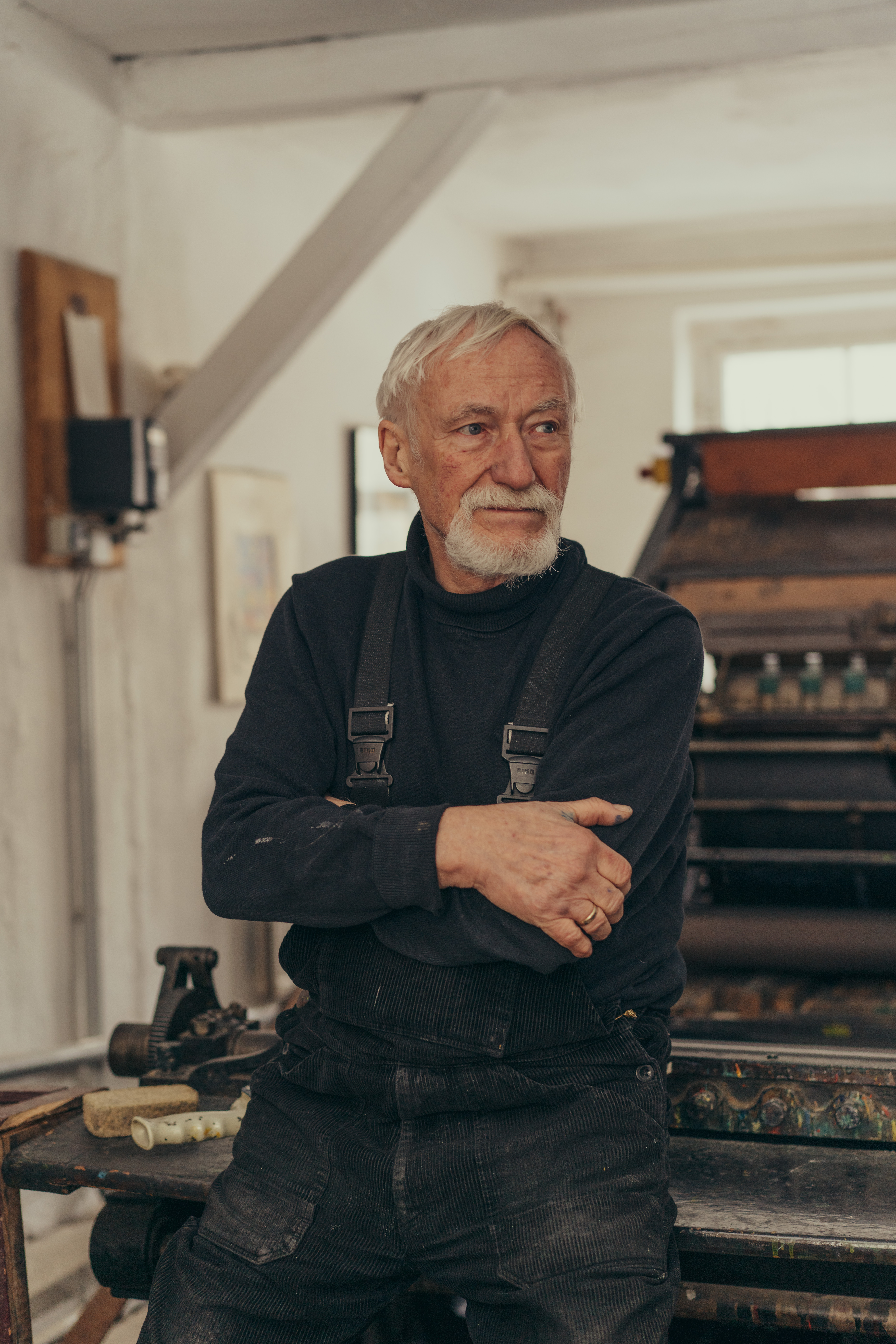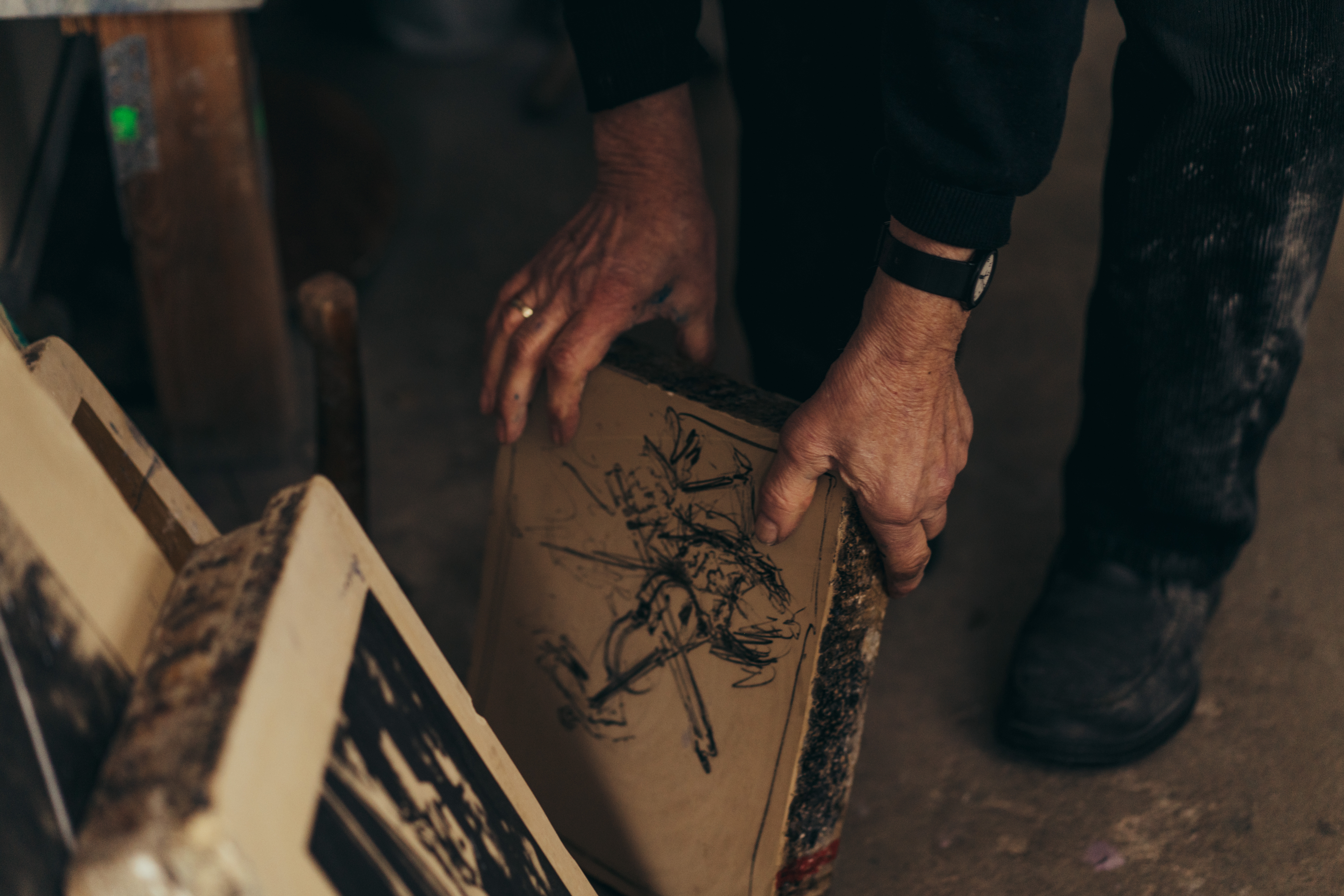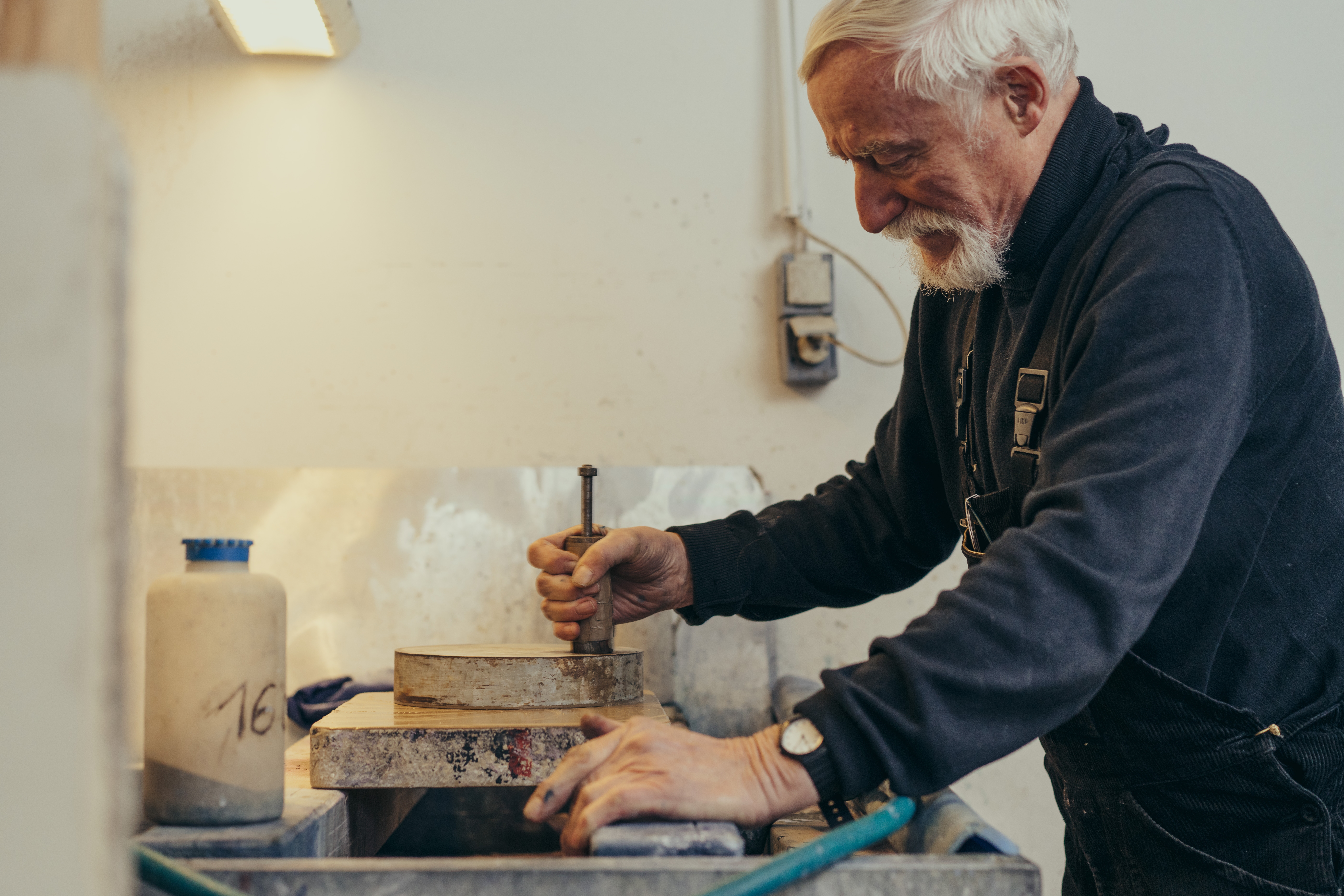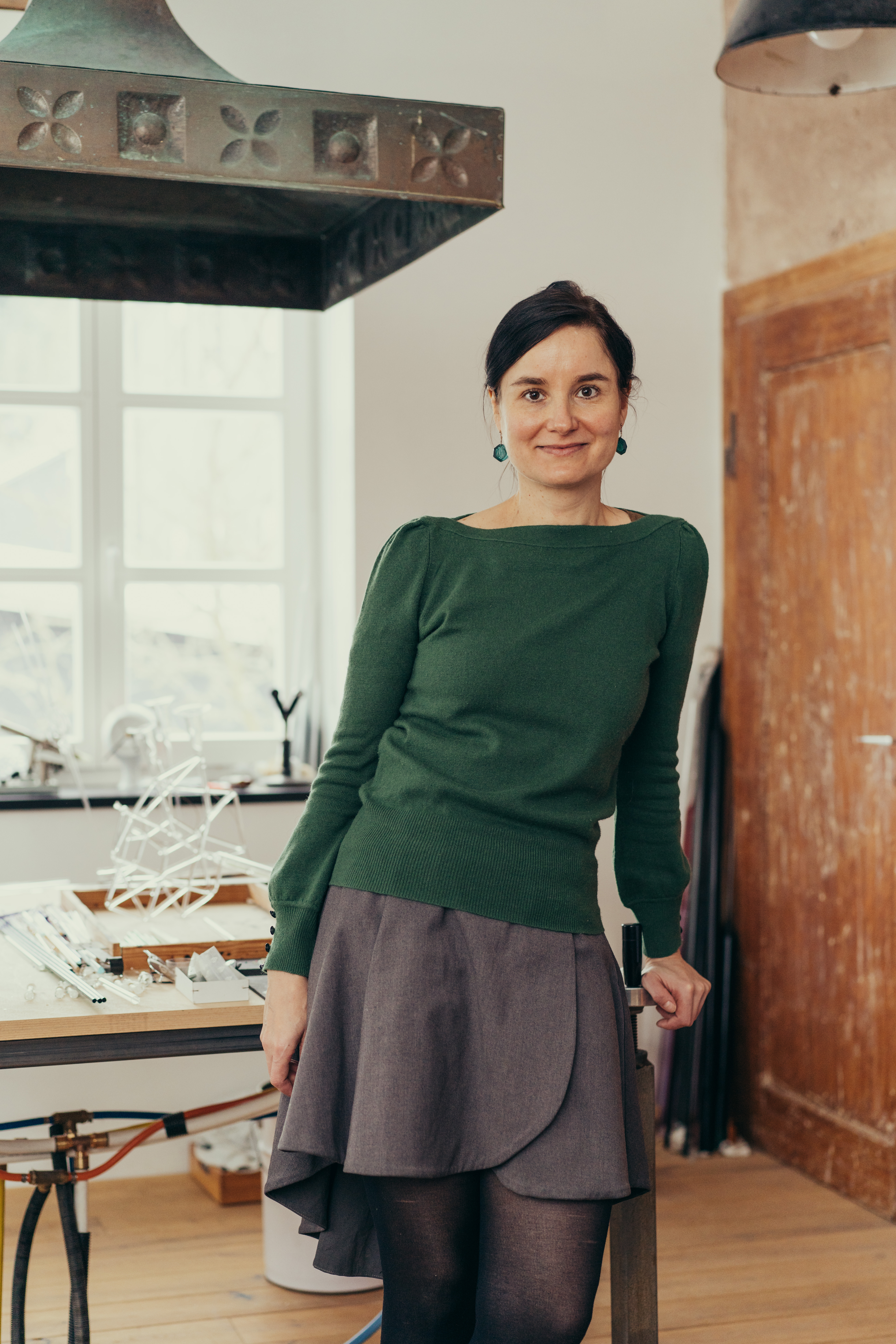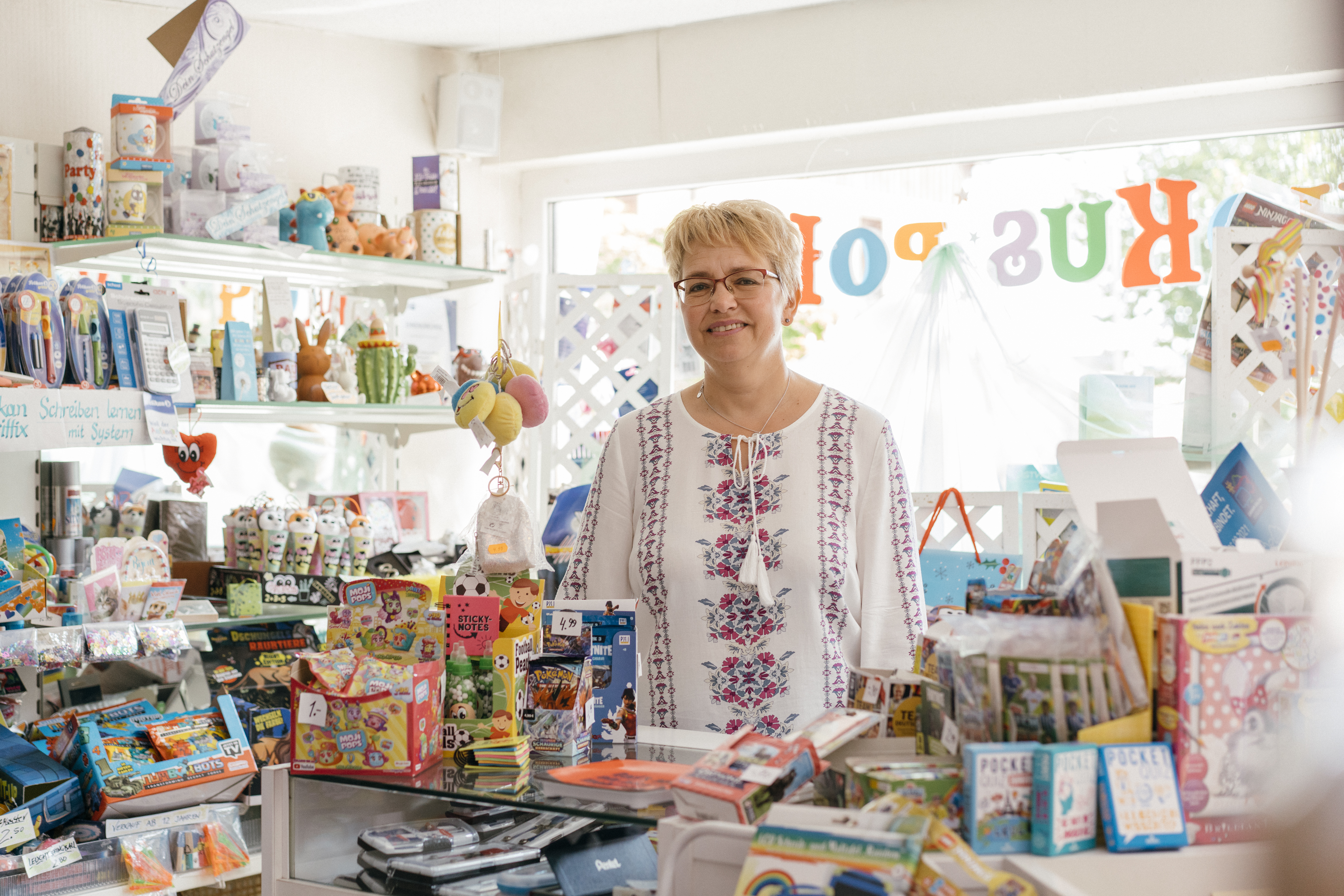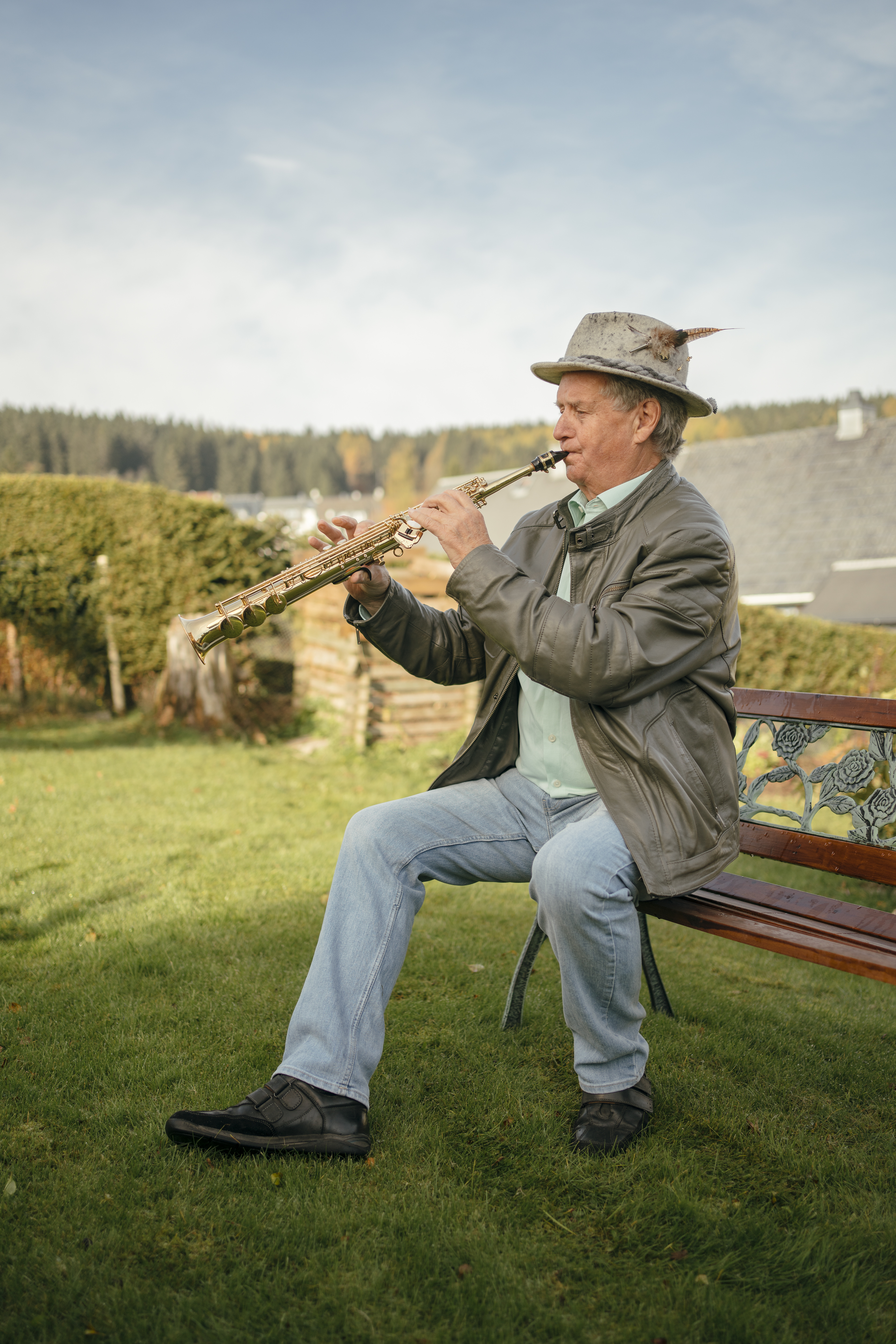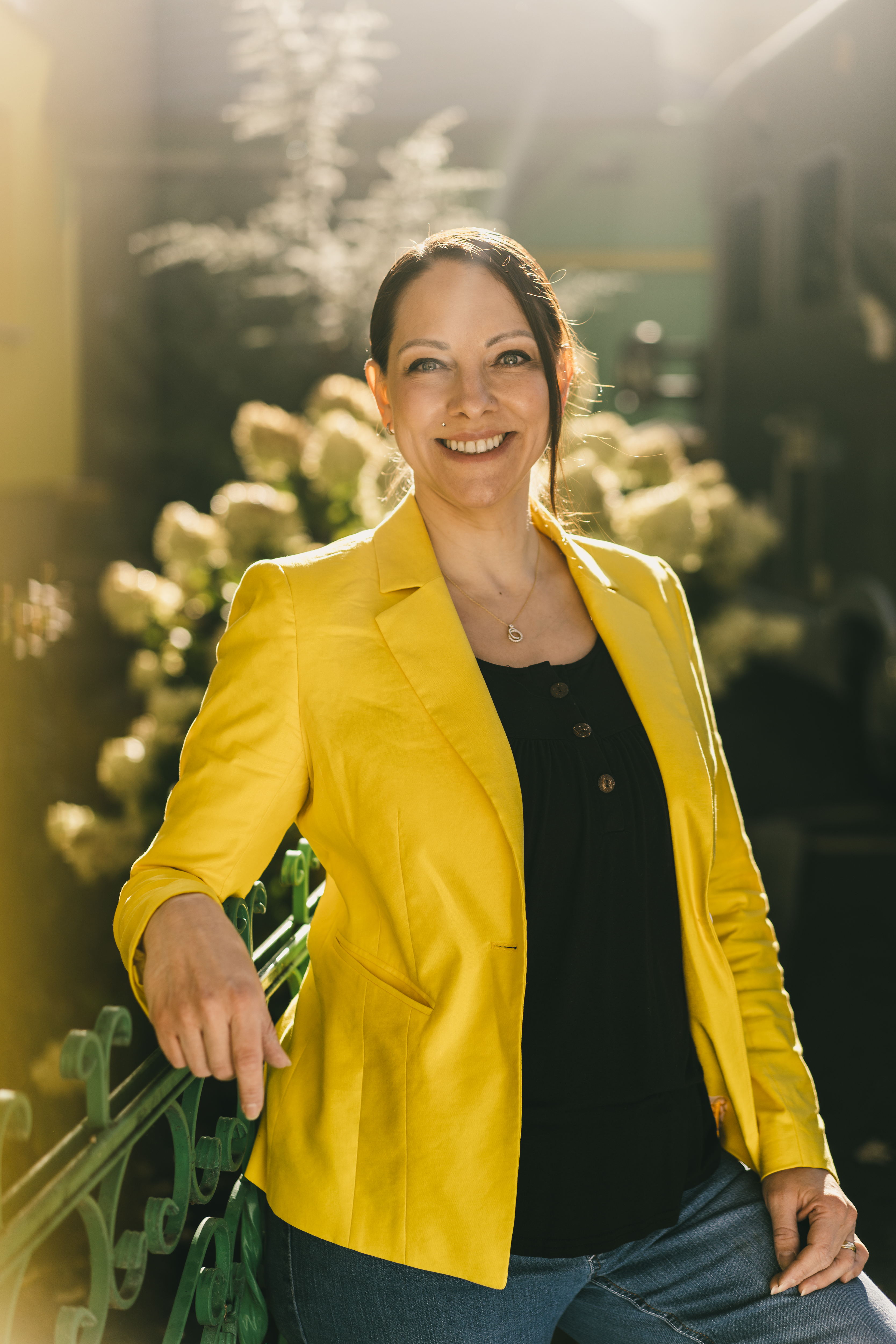HER(R)BERGSKIRCHEN
SHOW ON MAP
CHRISTIAN MÜLLER
THE ART NETWORKER
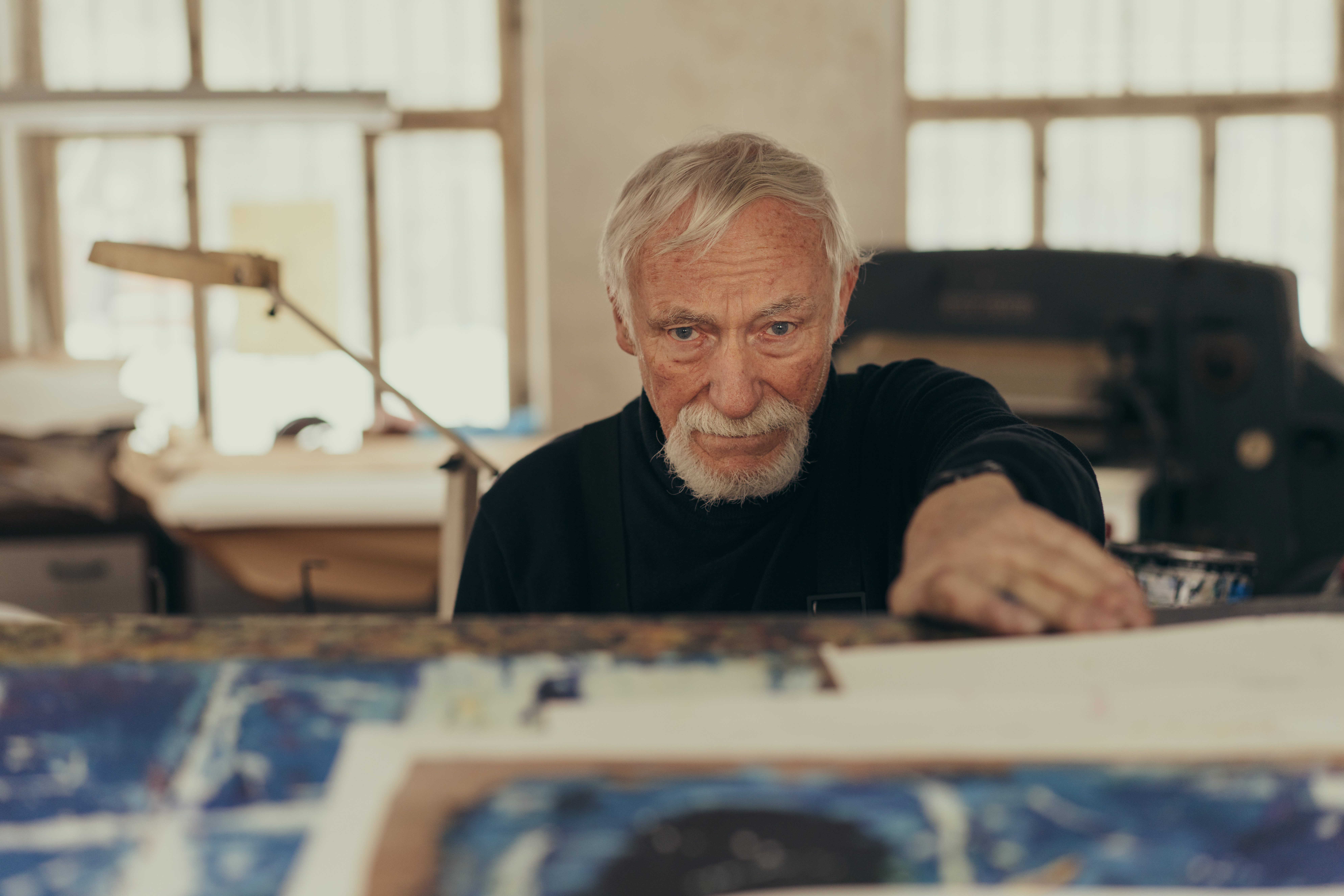
“In Leipzig, I knew every cellar and managed to gather hundreds of lithography stones together there,” says the Saxon native. “It can become a little excessive.” What Christian Müller is referring to is his love of lithography, a process the 79-year-old has dedicated his life to preserving. “My move from Großpösna to Wurzbach took a year, and getting all the machines here must have cost as much as a house.” Fortunately, in his wife's hometown, there was already far more than a house waiting for Müller, his bricks and his printing presses. But let’s start at the beginning. Christian Müller was born in Leipzig-Connewitz in the middle of the Second World War. He didn’t manage to get his high school diploma, so he learned to find unconventional ways and means to achieve his goals. “I had to catch up with things gradually,” he reports, not trying in the slightest to cover up his thick Saxonian accent. “I hope it's alright if I speak as a Connewitzer,” he says. That’s Müller for you, who is above all an art enthusiast. First he learned the profession of lithographer, then he enlisted in the military because he had to. Later he became an engineer for polygraphy and completed his gravure printing diploma at the Leipzig Technical University, “mostly because I could easily ride over there on the streetcar” he says. But certainly also because Leipzig was a center for printing as well as art printing. Müller became technical manager at the semi-state-owned company C. G. Röder, one of Europe's largest music printing houses, and then operations manager at Graphische Kunstanstalt H.F. Jütte, “a top-class print shop filled with idealists with a soft spot for art and lithographic bibliophile books,” which was guarded on all sides by the Stasi. “But it would never have occurred to me to go to the West. I always said, ‘I'll be the last man standing here,’” Müller recalls. “But even back in my school days, I got annoyed when I overheard that my teacher would get an award if he made sure that none of his students joined the church, so stubbornly I went ahead and got confirmed. We wore the crosses under our jackets. My commander and chief has always been the good Lord, then comes the lithograph, and Honecker came last.”
For eleven years now, the profession as such no longer exists. The training is forbidden. It’s only about digital scientific preservation now, so I’m doing everything I can to keep the process alive.
Before the fall of the Wall, Müller and his Wife, “who was always ahead of the game, without her none of this would have been conceivable” built up the “Grafik-Angebot” in Großpösna near Leipzig. Officially they had to label it as a boarding house with a print shop and pottery facilities, but in fact, it was one of the few existing private galleries with a publishing house for artists at that time, as all other art trading was basically handled by the state. “I have photographs of the art hanging on the clothesline in the garden, and people who were involved in this period of upheaval were sitting around everywhere,” Müller recounts, “the Christians, the Stasi, each one watching the other.” He founded an art association with non-artists to promote lithography. He trained seven apprentices in lithography, who now work on the Leipzig spinning mill site, among other places, and teach at art colleges in Leipzig, Halle and Weimar. “For eleven years now, the profession as such no longer exists. The training is forbidden. It's only about digital scientific preservation now, so I'm doing everything I can to keep the process alive.”
One thing that’s important to us, is that none of this has anything to do with elitist high art. The gallery and museum are open to everyone. My wife makes utilitarian objects herself in her pottery, but also sells objects by other artists, and kids can get something to read for 99 cents.
The former manor house in the center of Wurzbach, which his wife's grandfather converted into a fashion department store after World War I, has served as Müller’s world wide networking hub since 2005. At Kunsthaus Müller, the couple hosts summer festivals, workshops, readings and concerts in collaboration with the church. And, of course, Christian Müller keeps his machinery of late 19th-century lithographic presses and “super-modern” 1920s printing presses with aluminum plates for phototechnical work in use. He does print commissions for the actor Armin Mueller-Stahl, artists of the Leipzig School and Michael Fischer-Art. “One thing that’s important to us, is that none of this has anything to do with elitist high art. The gallery and museum are open to everyone. My wife makes utilitarian objects herself in her pottery, but also sells objects by other artists, and kids can get something to read for 99 cents,” Müller emphasizes. His art house on the border of Bavaria is no longer eyed suspiciously by locals. It is now recognized and appreciated as a space where people come together right next to the tower painted by Michael Fischer-Art on the market square. “Of course, all this is not easy to maintain, there are still a number of improvements to be made on the estate, even though I feel far from being a knight,” Müller tells us with a smile. “But the place can rely on us to get things going here. And if you have to be a little crazy to do all that, then I guess we are.”
